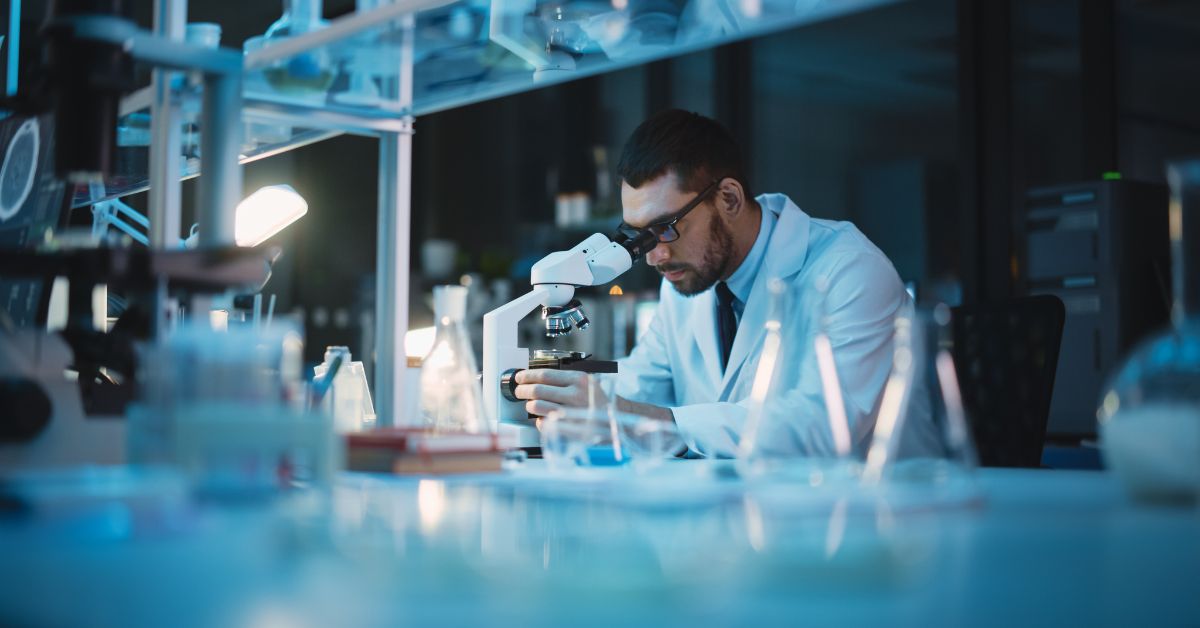

Numerous studies have shown that nutrient supplementation does not provide superior health and should not be viewed as a tool to prevent or treat diseases.[1][2][3][4] Some nutrient supplements even behave opposite to how they do in whole foods, as in the case of beta-carotene–containing foods versus isolated beta-carotene supplements.[5][6]
Despite this evidence, the supplement industry has been thriving for decades due to a combination of lax regulation, epidemics of chronic disease, and consumers’ understandable desire to be as healthy as possible with relatively little effort.[7][8]
(Learn more about supplements in general; learn more about CNS’s nutrition guidelines, including recommendations for supplements.)
But what about more sophisticated supplements, complex formulations derived from whole-food ingredients? Chances are you have seen or heard these products being marketed by brands like Athletic Greens (AG1), Juice Plus+ (JP), Rooted Nutrition, New Chapter, and Mega Food. You might even have heard of the vibrantly named Rainbow Light, which not long ago reached a settlement for a lawsuit after a third-party lab test found its prenatal vitamins—falsely advertised as free of heavy metals—contained lead, arsenic, and cadmium.[9]
Is “Whole Food Supplement” an Accurate Description?
According to one manufacturer, Standard Process, it’s best “to provide nutrients as they are found in nature – in a whole food state.”[10] This is ostensibly why their process begins with whole foods, and it’s what sets them apart from supplement manufacturers selling only isolated, synthetic nutrients. But the word begins cannot be emphasized enough. Don’t buy their Cruciferous Complete supplement expecting kale- and Brussels sprouts-sized capsules. The vegetables in their proprietary blend cannot be fit inside a capsule as they are found in nature—in a whole food state—and so the ideas they sell blatantly misalign with the products they sell. If you purchase their Calcifood wafers, prepare for whole foods like veal bone, bovine bone, defatted wheat germ, and calcium stearate (a waxy white powder you have probably never seen in nature). You can get a 30-day supply of both products if you purchase the Bone Health Pack.
We will shortly explore the manufacturing process in greater depth, so we can see how whole food supplements stack up against actual whole foods, but for now, notice the strange in-between space these products occupy. They’re not traditional supplements, yet they don’t belong in the produce aisle of your grocery store either.
The marketing language of these businesses is fascinating to compare. Some producers sell the idea that their products will replace the need for other supplements, saving you money in the long run and simplifying your supplement regime (as mentioned above, however, the need for a supplement regime is unproven); others arguably take a less subtle approach: “Need more fruits and veggies? We’ve got you!”[11]
You might wonder whether the wholeness of the foods is really that important and, if so, why. In other words, even though it’s impossible to fit an entire Brussels sprout in a capsule, if we can compress all of its nutritional goodness into the same capsule, is that so bad? Let’s find out. Can all the nutritional goodness of whole foods be compressed into a pill? How exactly are these products made, and what do they contain? What might be the nutritional implications of choosing a concentrated powder over a plant?

Juice Plus+ (JP) as a Case Study
Maybe the bulkiest obstacle to transforming a fruit or vegetable into a capsule is the fiber content of these foods. The clever technological workaround that JP employs is to pulverize the whole foods into a juice and then dehydrate the juice at a low temperature to create a powder.[12]
The problem is that when juice is extracted from whole foods, not all of the nutrients from the whole food reach the juice. Studies show that the byproducts of fruit juice processing retain many of the food’s bioactive compounds and therefore many of its nutritional benefits.[13][14] This nutrient-rich “waste” includes everything left behind (peels, pomace, etc.) with its many antioxidant, anti-inflammatory, and anticancer properties.
Consider the difference in oxygen radical absorbance capacity (ORAC), a measure of a food’s antioxidant content, between juices and whole foods: Unsweetened apple juice has an ORAC value (measured in µmol TE/100 g) of 408; whole apples, over 3,000.[15] Blueberry juice has an ORAC value of 2,906; whole blueberries, 6,552. Grapefruit juice has an ORAC value of 1,238; grapefruit, 1,548. Granted, antioxidant capacity is only one part of a food’s total nutritional value, and the whole food versus corresponding juice comparison is not 100 percent consistent (raw white or green grapes have a higher ORAC value than white grape juice, but red grape juice has a higher ORAC value than red grapes). But these examples demonstrate a tangible difference between juices and whole foods.
Another concern is toxins that are not an issue when we consume whole foods but can become concentrated in juices. For example, the mycotoxin patulin, which is responsible for causing brown spots on apples, can be avoided when eating a whole fruit. Companies juicing apples, however, may not demonstrate the same selectiveness. Numerous studies have shown that a notable percentage of apple products—including juices, purees, and products for infants—worldwide have patulin levels above the maximum level established by the European Commission, the US Food and Drug Administration, the Ministry of Health in China, and other agencies.[16]
Does that mean JP products, or similar products, contain high concentrations of mycotoxins? Not necessarily. But until these specific studies are conducted, we should at least be mindful of this potential toxicity before recommending or using such products, especially when healthy whole foods are readily accessible to most people who can buy JP.
Now, let’s take a closer look at the ingredients. Here’s what the vegetable blend contains: powdered fruit and vegetable juice and pulp blend from carrot, parsley, broccoli, spinach, kale, rice bran, tomato, garlic, cabbage, beetroot; tapioca pullulan, acerola cherry extract, mixed tocopherols, calcium carbonate, spirulina, lutein/zeaxanthin, sunflower d-α-tocopherol, beta carotene, lemon peel extract, lycopene, astaxanthin.[17]
As you can see, in addition to the powdered juice, JP includes several non-whole food ingredients in this product that they market as a whole food supplement. After the powder is tapioca pullulan, which is used to make the capsule, and acerola cherry extract, a non-whole food source of vitamin C. Mixed tocopherols is a combination of different types of vitamin E: alpha-tocopherol, beta-tocopherol, gamma-tocopherol, and delta-tocopherol. Large studies have shown that vitamin E supplements increase mortality compared to placebo, and the US Preventive Services Task Force (USPSTF) has recommended against their use on multiple occasions.[18][3]
Beta carotene and alpha-tocopherol appear further down the ingredients list; both have been studied in relation to lung cancer. One study had to be halted early because the rate of lung cancer and mortality increased in the intervention group compared to the placebo group.[5] Another study found that “Alpha-tocopherol had no apparent effect on total mortality, although more deaths from hemorrhagic stroke were observed among those who received this supplement than those who did not.”[6]
Lycopene is a bright red carotenoid found in tomatoes, watermelons, and other foods. It is one of the substances thought to be responsible for these foods’ health-promoting effects. But lycopene is only one player in a symphony of nutrients. Isolated lycopene, not the tomato, was found to have no benefit on cancer promotion; in the same study, lutein, also on the ingredients list, was associated with a statistically significant elevated lung cancer risk for women.[19] Astaxanthin is a red fat-soluble pigment in algae, yeast, and marine animals.[20] Throw in some calcium carbonate, spirulina (a type of algae), and lemon peel extract, and what do you get? The so-called next best thing to fruits and vegetables.
We have two questions:
- If the main difference between traditional nutrient supplements and whole food supplements is that the latter better preserves and amplifies the nutritional benefits of fruits and vegetables, why should it be necessary to add several isolated nutrients back into the mix, essentially supplementing the supplement, especially when those nutrients are either unproven or potentially hazardous?
- Why not make a salad instead?
The answer to the second question is pretty obvious to anyone who has watched JP’s marketing materials, which are full of anecdotal endorsements, mostly from women of a child-rearing age talking about the ease and convenience of taking the capsules and giving them to their families.[21] We don’t need to blame individual consumers for seeking convenience, but the manufacturer certainly deserves more scrutiny. What is abundantly clear from these ingredients is that their products are not the equivalent of what one woman calls “A salad bar in a capsule.”
Evidence That Supports Using JP
While it’s true that JP has funded studies, which is more than we can say for most supplement companies, the data are not as impressive as you might hope.
First, consider different types of evidence. We often hear that supplements improve surrogate markers of health, such as cholesterol levels or blood vessel spasms; it requires more time and people to determine whether supplements change more important health outcomes, such as heart attacks, cancer, or death. Relying solely on biomarkers can cause confusion and potentially dangerous outcomes.
Think of this as a progression: it’s easiest for researchers to show changes in biomarkers, harder to demonstrate changes in the rates of heart attacks and strokes, and most difficult (but also most important) to show changes in the mortality rate. Companies sponsoring a study, like JP, have an interest in finding benefits however possible, and that usually means focusing on the biomarkers even when there might be contradicting evidence that shows an increase in cancer or death rates. Likewise, a company might highlight a study that shows a decrease in the death rate from one disease, but those findings are less important to us if the death rate from another disease simultaneously increases. We have to remember to analyze the entire data critically and balance the potential benefits against potential risks.
Two hundred years ago, scurvy was a health risk for individuals at sea. Because they did not have the technology to rely on testing biomarkers, they had to test treatments where the illness occurred, out at sea. That’s where they learned lemons prevent scurvy, but they then ran into another problem: moldy lemons. Hypothesizing that the acid in the lemons was responsible for preventing scurvy, doctors gave sailors diluted sulfuric acid as an antiscorbutic.[22] People continued not only to get scurvy but also to get sick from the acid. They then tried lemon juice reductions, but those also failed to prevent scurvy when tested at sea. In other words, the whole lemons worked, but the reductionist treatment attempts did not. When it comes to scurvy or any other ailment or disease, it is preferable to conduct a rigorous test to know what happens at sea. Are we confident, based on its effects on a few biomarkers, that JP positively affects the most important outcomes?
With all that in mind—and with some of the studies referenced above in mind, in which beta carotene, vitamin E, lutein, etc. showed either an elevated risk or no benefit—let’s consider a JP study on flow-mediated dilation (FMD).[23] Because it is not just a blood level of some biochemical marker, FMD might be a better indicator of improved health. Also, this particular study is apt for closer inspection because its conclusion seems quite favorable for JP.
Supported by a grant from Natural Alternatives International, which manufactures JP, the researchers compared two treatment groups, one receiving JP and the other receiving JP plus another supplement called Vineyard (JP+V), to placebo. Their goal was to test whether “long-term daily administration [four weeks daily supplementation] of phytonutrient supplements can prevent the immediate adverse impact of a high-fat meal and increase the production of nitric oxide.” The high-fat meal of choice was an Egg McMuffin, Sausage McMuffin, two hash brown patties (McDonald’s Corporation), and a non-caffeinated beverage. Despite being 50 percent fat, this meal was deficient in the essential omega-3 fats and in many essential vitamins, minerals, and fiber. The researchers measured how much a particular blood vessel dilated (as a percentage) when fasting compared to three hours after the McDonald’s meal.
Simply put, they tested the supplements’ ability to lessen the damage caused by a McDonald’s meal.
You can see in the table below that at baseline individuals in the placebo group had a FMD of 20.2 percent when fasting and 11.7 percent 3 hours after the high-fat meal. The difference, 8.5 percent, is the absolute reduction in FMD thought to be caused by the high-fat meal. See the chart below for the results:
Fasting versus 3 Hours after High-Fat Meal
| JP | JP + V | PLACEBO | |
|---|---|---|---|
| Baseline | 13.2 → 7.63 | 15.8 → 8.0 | 20.2 → 11.7 |
| After 3 Weeks of Supplementation | 9.4 → 6.4* | 15.8 → 12.4* | 15.7 → 9.9 |
| After 4 Weeks of Supplementation | 9.7 → 7.4* | 12.8 → 11.2* | 15.3 → 10.2 |
*not a statistically significant difference
As you can see, after weeks of supplementation, the treatment groups showed a decrease on average in dilation after the high-fat meal, but that decrease was slight enough to be considered not statistically significant. This is a promising finding for the supplement manufacturer. (Incidentally, although statistical significance is obviously a useful measure, many scientists have pointed out how easily it can be used to misconstrue findings and mislead policy decisions; a p-value greater than an arbitrary .05 does not mean there is no effect, although this is often the message or implied message in headlines.[24])
But note the changes from baseline. Subjects receiving JP began the study with a fasting diameter of 13.2 percent, compared to 9.7 percent by the end of the study. Is it possible JP impaired fasting arterial function? Once at 9.7 percent (or 9.4 percent after three weeks of supplementation), the high-fat meal seemed to have a less severe effect on FMD, but that doesn’t necessarily mean JP has a protective effect. Indeed, participants supplementing with JP had worse arterial function before the high-fat meal (9.4 and 9.7 percent) than those receiving the placebo did after the high-fat meal (9.9 and 10.2 percent).
Also, did you notice how the placebo group’s fasting level also decreased after three or four weeks? Why are these numbers so variable, and how much can we conclude from them? The study only included 38 subjects; a larger study is needed to learn more about the effects of these supplements.
Here’s another peculiar observation: although the researchers describe 38 healthy subjects, the numbers only add up to 36 (10 in the placebo group, 14 in the JP group, and 12 in the JP+V group). Did they remove two people from the study? And why did they design the study to not place equal weight on the placebo group? In such a small study, seemingly minor differences like these could skew the results. Apart from a few biomarkers (e.g., cholesterol and homocysteine), they also include very little information about the participants at baseline. Why was the vessel dilation greater in the placebo at baseline? What was the selection process for this study?
You might wonder about the JP+V group. These subjects did better than those who received only JP, at least when it came to FMD, but they also showed no effect on cholesterol levels. So, which surrogate marker is more important? This inconsistency makes it even more important that we wait for tests on mortality and other morbidity outcomes (like the effect on heart attack rate), because, again, changes to biomarkers do not always accurately predict these far more important outcomes. There was once a drug called clofibrate that was great at lowering cholesterol and even decreasing heart disease; however, when it was adequately studied, it showed an increase in mortality compared to placebo.[25]
Finally, we might be wiser to focus on the source of blood vessel dysfunction. We know that high-fat meals impair blood vessel function; instead of swallowing capsules to lessen that damage, we would be better served by avoiding the damage in the first place. And if JP is going to recommend that healthy individuals take their products, studies like these are of relatively little value. A more useful study would test the effectiveness of JP on subjects enjoying a genuine whole food, plant-based (WFPB) diet that is low in fat.

Other Concerns about JP
One of the top questions on the JP page is How much money can I earn?
That’s right—this business is at least partly powered by a membership program wherein “partners” earn money by recruiting others. The fee for joining is $52, but they claim “you can easily earn that back – plus a whole lot more.”[26]
Their official position is that they are not a multi-level marketing (MLM) scheme:
“MLMs’ primary focus is ‘recruiting’ people to sell their products. The Juice Plus+
Company’s prime focus is on sharing our products with consumers.
We offer our Partners the opportunity to earn extra income by adding other people they know to their Juice Plus+ team. But we also offer a “customer only” track for those Partners who only want to share Juice Plus+ products with others and not build a team.”
Judge these claims for yourself.
If Supplements Are Unproven, Why Do So Many People Report Feeling Better?
The personal experiences of others can be helpful in some contexts, but it’s best not to make potentially health-altering decisions based only on such weak evidence, especially when looking at only the most glowing testimonials selected by a manufacturer. Likewise, it’s best not to choose a product only because a supposed authority has told you to. Anyone promoting the sale of a product, including doctors, should be able to convincingly explain their reasoning and offer relevant data if you ask for it.
In a study involving individuals suffering from restless leg syndrome (RLS), the drug ropinirole (Requip) was found to improve symptoms in 70 percent of participants.[27] That finding alone makes the drug look amazing. Any drug or supplement manufacturer would be thrilled to get such a result. However, the FDA protects consumers by mandating a placebo-controlled study before allowing its use for medical treatment. In the Requip study, 55 percent of those taking the placebo also said their symptoms improved, so the amount attributable to the drug in this study was actually 15 percent.
Why are we telling you this? It demonstrates what might happen if you only focus only on anecdotes or single-arm studies of self-perceived efficacy: you can easily get a vastly inflated idea of a product’s benefits. Moreover, that 15 percent figure needs to be balanced against the expense of purchasing the product plus the potential adverse effects. If patients with RLS were to learn, for instance, that compared to placebo, Requip also causes 35 percent more nausea, 7 percent more vomiting, 4 percent more dizziness, and 6 percent more somnolence (drowsiness), they might feel differently about trying the drug.
Other Whole Food Supplements
Many similar companies are producing similar products, but they are not all the same. Apart from differences in their manufacturing and ingredients, companies also differ in their level of transparency and their sales processes. It would be unfair to lump all such supplement producers into the same category as JP.
But there are definitely similarities in their approaches. Essentially, they all begin with whole foods, sell the importance of whole foods, and assume that the nutritional properties of whole foods can be delivered in a condensed form. Whether that condensed form is a capsule made of gelatin, tapioca pullulan, or something else, or whether it’s a shake, a wafer, or a gummy, might alter its effects; the ingredients they choose might alter its effects; but ultimately, the reductionist approach is still central.
It would take a full-length book to comprehensively assess all the health claims, ingredients, and research associated with every one of these products. That level of detail is beyond the scope of this article. We recommend that you use this article as a starting point and approach each company and product independently. Keep an open mind but also ask yourself whether the breadth and depth of evidence supports the claims. Ultimately, every individual must take responsibility for their choices and conduct their own risk assessment, but they should try to gather as much information as they can first.
In the meantime, it also bears repeating that supplements are not regulated in the same way as drugs. Although the FDA could better protect public health, it does come through from time to time. For example, when Baycol, a cholesterol medication, was linked to severe muscle breakdown and kidney damage, it was taken off the market.[28] The FDA does not have the same legal authority over supplements.[8] If someone comes to the hospital with a heart attack, kidney failure, or other medical problem, it is quite likely that no one would even question the supplements, given the countless other variables present. This is why they must be studied first.
Some people will say that if there were problems with these products, we all would have heard about them by now. This is an unscientific, irresponsible approach. We should demand to know, at the very least, that these supplements do not increase heart attacks, cancer, deaths, etc., as other supplements have been shown to do. Even if their safety is proven, we should also demand high-quality evidence for using them on top of a diet already rich in whole fruits and vegetables and low in fat.
References
- Abdelhamid AS, Brown TJ, Brainard JS, et al. Omega‐3 fatty acids for the primary and secondary prevention of cardiovascular disease. Cochrane Database of Systematic Reviews. 2018;7(CD003177). doi:10.1002/14651858.CD003177.pub3.
- U. S. Preventive Services Task Force. Routine vitamin supplementation to prevent cancer and cardiovascular disease. Nutr Clin Care. 2003;6(3):102-107.
- Moyer VA; U.S. Preventive Services Task Force. Vitamin, mineral, and multivitamin supplements for the primary prevention of cardiovascular disease and cancer: U.S. Preventive services Task Force recommendation statement. Ann Intern Med. 2014;160(8):558-564. doi:10.7326/M14-0198
- Jenkins DJA, Spence JD, Giovannucci EL, et al. Supplemental Vitamins and Minerals for CVD Prevention and Treatment. J Am Coll Cardiol. 2018;71(22):2570-2584. doi:10.1016/j.jacc.2018.04.020
- Omenn GS, Goodman GE, Thornquist MD, et al. Risk factors for lung cancer and for intervention effects in CARET, the Beta-Carotene and Retinol Efficacy Trial. J Natl Cancer Inst. 1996;88(21):1550-1559. doi:10.1093/jnci/88.21.1550
- Alpha-Tocopherol, Beta Carotene Cancer Prevention Study Group. The effect of vitamin E and beta carotene on the incidence of lung cancer and other cancers in male smokers. N Engl J Med. 1994;330(15):1029-1035. doi:10.1056/NEJM199404143301501
- Swann JP. The history of efforts to regulate dietary supplements in the USA. Drug Test Anal. 2016;8(3-4):271-282. doi:10.1002/dta.1919
- U.S. Food & Drug Administration. FDA 101: Dietary Supplements. Last updated June 2, 2022. Accessed March 8, 2024.
- KCAL News. Rainbow Light prenatal vitamins marketed as ‘free of heavy metals’ found to contain lead, arsenic, cadmium. CBS News. August 14, 2019. https://www.cbsnews.com/losangeles/news/rainbow-light-prenatal-vitamins-marketed-as-free-of-heavy-metals-found-to-contain-lead-arsenic-cadmium/
- Standard Process. Whole food philosophy. Accessed April 3, 2024. https://www.standardprocess.com/about-us/quality/whole-food-philosophy
- Juice Plus+. Home page. Accessed April 3, 2024. https://www.juiceplus.com/us/en
- Juice Plus+. From plants to products. Accessed April 3, 2024. https://www.juiceplus.com/us/en/learn/ingredients-and-benefits/how-juice-plus-capsules-are-made
- Kandemir K, Piskin E, Xiao J, Tomas M, Capanoglu E. Fruit Juice Industry Wastes as a Source of Bioactives. J Agric Food Chem. 2022;70(23):6805-6832. doi:10.1021/acs.jafc.2c00756
- McCann MJ, Gill CI, O’ Brien G, et al. Anti-cancer properties of phenolics from apple waste on colon carcinogenesis in vitro. Food Chem Toxicol. 2007;45(7):1224-1230. doi:10.1016/j.fct.2007.01.003
- Nutrient Data Laboratory et al. Oxygen radical absorbance capacity (ORAC) of selected foods—2007. https://www.govinfo.gov/content/pkg/GOVPUB-A77-PURL-LPS106748/pdf/GOVPUB-A77-PURL-LPS106748.pdf
- Zhong L, Carere J, Lu Z, Lu F, Zhou T. Patulin in Apples and Apple-Based Food Products: The Burdens and the Mitigation Strategies. Toxins (Basel). 2018;10(11):475. Published 2018 Nov 15. doi:10.3390/toxins10110475
- Juice Plus +. Vegetable blend nutrition facts. Accessed April 3, 2024. https://www.juiceplus.com/assets/juiceplus/nala/downloads/pdf-documents/us/products/capsules/essentials-us-veg-blend.pdf.coredownload.pdf
- Bjelakovic G, Nikolova D, Gluud LL, Simonetti RG, Gluud C. Mortality in randomized trials of antioxidant supplements for primary and secondary prevention: systematic review and meta-analysis [published correction appears in JAMA. 2008 Feb 20;299(7):765-6]. JAMA. 2007;297(8):842-857. doi:10.1001/jama.297.8.842
- Satia JA, Littman A, Slatore CG, Galanko JA, White E. Long-term use of beta-carotene, retinol, lycopene, and lutein supplements and lung cancer risk: results from the VITamins And Lifestyle (VITAL) study [published correction appears in Am J Epidemiol. 2009 Jun 1;169(11):1409. Dosage error in article text]. Am J Epidemiol. 2009;169(7):815-828. doi:10.1093/aje/kwn409
- Ambati RR, Phang SM, Ravi S, Aswathanarayana RG. Astaxanthin: sources, extraction, stability, biological activities and its commercial applications–a review. Mar Drugs. 2014;12(1):128-152. Published 2014 Jan 7. doi:10.3390/md12010128
- Juice Plus +. What is Juice Plus with how it is made? Published 2017 on Vimeo. https://vimeo.com/199459967
- Carpenter KJ. A short history of nutritional science: part 1 (1785-1885). J Nutr. 2003;133(3):638-645. doi:10.1093/jn/133.3.638
- Plotnick GD, Corretti MC, Vogel RA, Hesslink R Jr, Wise JA. Effect of supplemental phytonutrients on impairment of the flow-mediated brachial artery vasoactivity after a single high-fat meal. J Am Coll Cardiol. 2003;41(10):1744-1749. doi:10.1016/s0735-1097(03)00302-4
- Amrhein V, Greenland S, McShane B. Scientists rise up against statistical significance. Nature. 2019;567(7748):305-307. doi:10.1038/d41586-019-00857-9
- WHO cooperative trial on primary prevention of ischaemic heart disease with clofibrate to lower serum cholesterol: final mortality follow-up. Report of the Committee of Principal Investigators. Lancet. 1984;2(8403):600-604.
- Juice Plus +. Juice Plus earnings summary. Accessed April 3, 2024. https://www.juiceplus.com/assets/juiceplus/nala/downloads/pdf-documents/us/juiceplus-earnings-summary-english.pdf
- Bogan RK, Fry JM, Schmidt MH, Carson SW, Ritchie SY; TREAT RLS US Study Group. Ropinirole in the treatment of patients with restless legs syndrome: a US-based randomized, double-blind, placebo-controlled clinical trial. Mayo Clin Proc. 2006;81(1):17-27. doi:10.4065/81.1.17
- Marwick C. Bayer is forced to release documents over withdrawal of cerivastatin. BMJ. 2003;326(7388):518. doi:10.1136/bmj.326.7388.518/a
Copyright 2025 Center for Nutrition Studies. All rights reserved.
Deepen Your Knowledge With Our
Plant-Based Nutrition
Certificate
Plant-Based Nutrition Certificate
- 23,000+ students
- 100% online, learn at your own pace
- No prerequisites
- Continuing education credits











